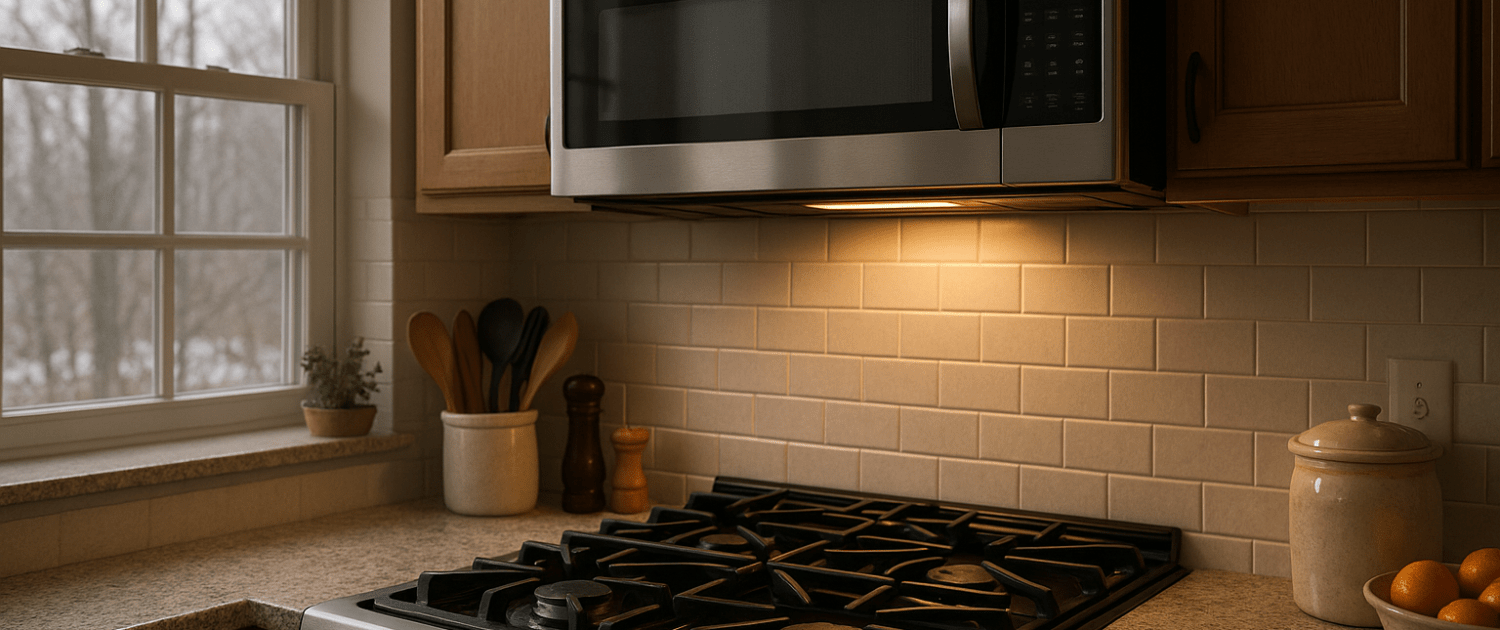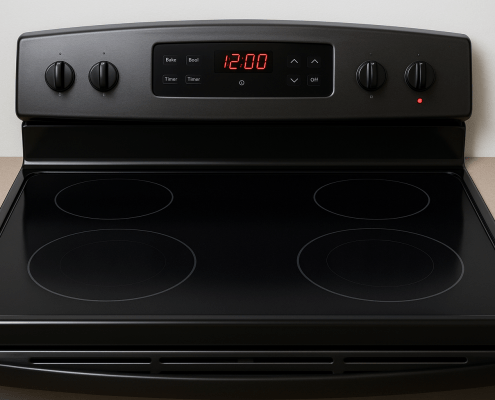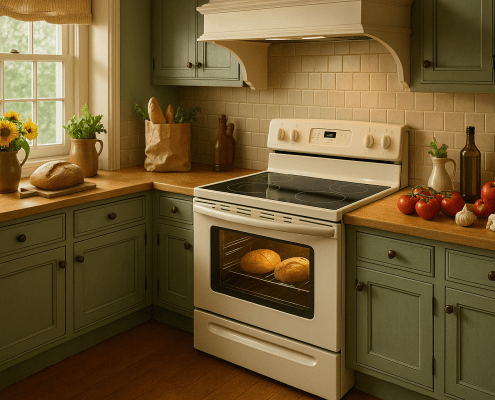Bosch Gas Range Burner Seal 00189317 Replacement Guide
Steven E / Thursday May 22, 2025
Struggling with strange gas odors or flickering flames from your beloved Bosch gas range? A worn-out gas burner seal could be the culprit, compromising the safety and efficiency of your cooking experience. Discover how easy it is to swap in a new burner seal by checking out the step-by-step video guide just below, and bring back stable flames and peace of mind to your kitchen.
Looking for the right part? Enter your appliance model number below to find the exact match and get your appliance running like new again!
Noticing gas odors or uneven flames around the burner on your Bosch gas range? It might be time to replace the burner seal (part #00189317). This small gasket helps ensure a tight fit between the burner and cooktop, preventing leaks and keeping your flame steady. Replacing it is quick and easy, and it can make a big difference in performance and safety. We’ll show you how to remove the old seal and install the new one without any fuss.
Watch: How to replace gas burner seal
The information in this article may not apply to your specific appliance model. We recommend consulting your manufacturer’s documentation or contact us with any questions.
What Does the Gas Burner Seal Do?
The gas burner seal is a small but critical component in your gas cooktop. This rubber gasket sits between the base of the burner and the cooktop surface. When operating properly, it creates a tight seal that prevents gas, moisture, and spilled food from leaking down into the gas lines and valves below the cooktop.
Over time, this seal can become brittle, cracked, or flattened from heat and use. A compromised gas burner seal can lead to a number of issues:
- Inconsistent flame or low flame intensity
- Burners not igniting
- Burners igniting slowly
- Gas odor
Replacing a worn or damaged seal is a quick and inexpensive way to get your gas burners working safely and efficiently again.
Signs You May Need a New Gas Burner Seal
How can you tell if your gas burner seal needs replacing? Here are a few key signs to look out for:
- Ignition problems – If your burners light inconsistently, are very slow to ignite, or won’t light at all, a faulty seal preventing proper gas flow could be the issue.
- Low or uneven flames – If your burner flames are smaller than normal or you notice the flames dying down during cooking, the seal may not be maintaining consistent gas pressure.
- Gas smell – Getting a whiff of gas around your cooktop? This points to a leak somewhere, often caused by a bad seal. This is a hazard you’ll want to address ASAP.
- Moisture or grime around the burners – A compromised seal can allow spills, grease, and debris to leak down into the gas system. Evidence of this around your burners is a red flag.
- Visible cracking or damage – Physically inspect the seals when you remove the burners. Obvious cracks, flattening or deterioration indicate they should be replaced.
If you notice any of these warning signs, don’t delay – read on to learn how to swap in a new gas burner seal and get your range running safely again.
What You’ll Need for This Repair
Here’s what you’ll need to complete the repair:
- New replacement gas burner seal(s) – Use your model number to locate the correct part for your unit. For this guide, we are using Bosch part number 00189317
- Socket wrench
- Gloves
- Safety goggles
And of course, make sure your range is turned off at the breaker and disconnected from the gas supply before beginning. Safety first!
Removing the Old Gas Burner Seal
Once you’ve gathered your replacement parts and tools, it’s time to remove the burners and old seals. Follow these steps:
- Turn off the power and gas supply – Shut off the circuit breaker for your range. Then locate the gas shut-off valve behind the unit and turn it off.
- Remove grates, caps, and burner heads – Lift off any heavy, removable grates from the cooktop surface. Then lift out the burner caps and burner heads one by one.
- Disconnect the gas line – Use your socket wrench to loosen the gas line nut connecting the burner base to the gas pipe. Completely detach.
- Remove burner base – The base should now lift directly out, revealing the gas burner seal underneath.
- Inspect old seal – Closely examine the old seal for cracks, wear and tear or deterioration.
- Clean surface – Use a damp cloth to wipe away any grime, grease or debris around the now-exposed cooktop area.
With the old seal removed, it’s time to install the new replacement.
Installing Your New Replacement Gas Burner Seal
You’re nearly done! Follow these steps to safely install your new seal:
- Check the new seal – Inspect the new replacement part for any defects before installing. Make sure it’s the proper size and shape.
- Insert new seal – Gently press the fresh seal evenly into the slot in the burner base. Make sure it’s fully seated.
- Re-attach burner base – Place the burner base back into the opening, aligning it properly.
- Reconnect gas line – Thread the flexible gas line back into the base and tighten down with your wrench.
- Perform leak check – Turn the gas supply back on, then brush soapy water around the seals to check for any gas bubbles/leaks.
Once you verify a tight seal with no leaks, you’re ready to reassemble your cooktop.
Replacing Burners and Testing Ignition
You did it! Just a few simple steps left to wrap up the repair and get cooking again:
- Replace burner caps and heads – Put all burner components back into place on top of the sealed bases.
- Replace grates – Return any removable grates to their spots on the cooktop surface.
- Restore power – Turn the circuit breaker back on to restore electricity to the range.
- Test ignition – Turn your burners on one by one. Check that they ignite promptly and flames burn evenly.
- Clean up – Give the cooktop a good wipe-down to remove any leftover debris and dust.
That’s all there is to it! With your new gas burner seals professionally installed, you can get back to whipping up culinary masterpieces on your Bosch, Thermador, or Gaggenau range.
Additional information
Thank you for reading! We hope you found this information useful to get your gas range working again.
If you have any other appliance repair needs or projects, don’t hesitate to explore our thousands of free videos and troubleshooting guides available. If you need replacement parts or some extra help, grab your model number and head over to AppliancePartsPros.com, where you can chat with a pro, order parts, read our DIY blog and more.
Be sure to subscribe to us on YouTube and follow us on Facebook, Twitter and Instagram!
With nearly a decade of experience in providing top-notch customer service regarding appliance parts and repair, Steven enjoys sharing practical advice, troubleshooting tips, and interesting information to help readers stay informed.





